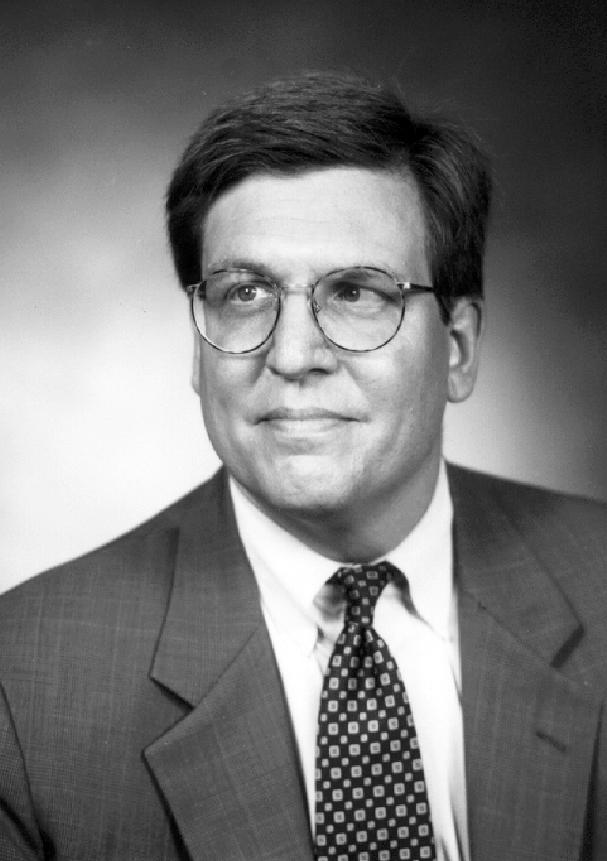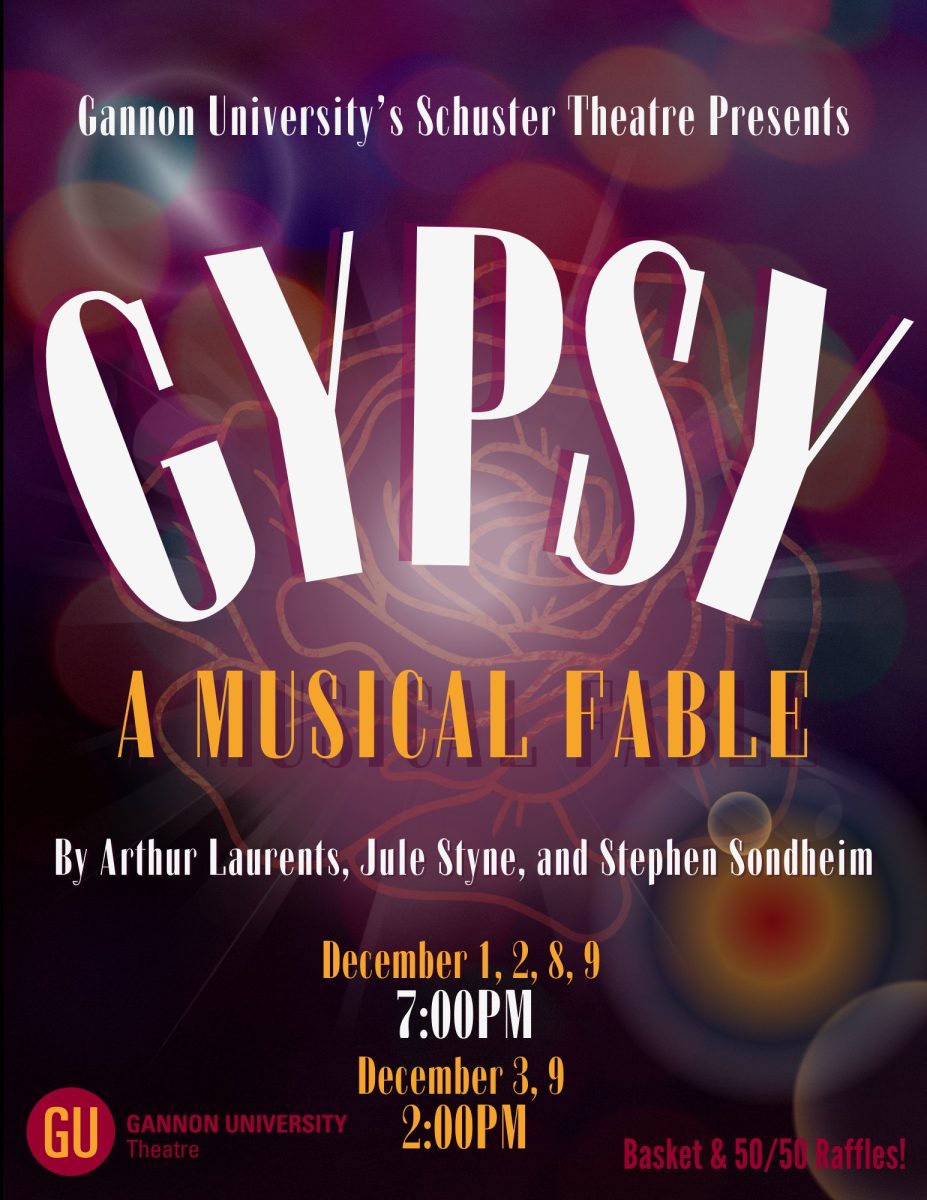Michael DeSanctis, Ph.D., a professor of fine arts, has decided that after 34 years, “a long time by anyone’s standard,” he will be retiring.
As he prepares to leave Gannon University, he reflects on his journey that has been filled with many life-changing experiences, defining moments and everlasting memories.
Growing up, DeSanctis lived with his parents and siblings in Utica, N.Y., in the upper flat of a duplex-style home owned by his paternal grandparents.
DeSanctis said that he was extremely close with his grandfather, who was a church painter-decorator. He had been trained in Italy and DeSanctis said he was a great advocate of education.
DeSanctis learned a great deal from his grandfather.
“It was in the studio he maintained in that household that I literally learned at his feet how to repair the kind of plaster devotional statuary found in Catholic places of worship, how to apply gold leaf and how to imitate marble through tricks of the paint brush,” DeSanctis said.
“I was steeped in religious art, which I believe to this day was the origin of my scholarly interest in the link between spiritual and aesthetic experience.”
DeSanctis said that, to him, there has never been much distinction between the two.
Growing up, DeSanctis said he always wanted to be a Catholic priest, “but God had a different vocation in store for me, which I’m sure makes my four kids happy.”
DeSanctis said he was blessed to have taken his undergraduate degree in studio art from the State University College of Arts and Science at Potsdam, located in New York. SUNY Potsdam is home to the Crane School of Music, which trains about a third of the music educators in the state of New York.
Although DeSanctis majored in the visual arts, he sang for four years in the Crane Chorus, and he said he also sang under Aaron Copland’s baton.
After completing his undergraduate degree, DeSanctis went on to earn his master’s and doctoral degrees from Ohio University, located in Athens, Ohio.
DeSanctis said that even though he continued to pursue the visual arts with his master’s in fine arts, he spent an entire year composing, choreographing and staging an original liturgical celebration called “A Mass for Friends and Family.”
It was performed by student volunteers from the School of Music and the School of Dance.
“It was a crazy, over-ambitious undertaking at the time but formed the perfect bridge to my interdisciplinary studies at the doctoral level, which examined sacred music and architecture in a comparative way,” DeSanctis said.
This composition was for his MFA thesis, a full-blown musical setting in the Roman Catholic Mass, which also ended up being a bridge to his doctoral dissertation.
DeSanctis was also a teacher of record throughout his graduate studies and was a recipient of the university’s Siegfred Award for excellence in the classroom.
Next, DeSanctis began his doctoral studies in comparative arts. His dissertation addressed the influence of Vatican II on Catholic architecture and music for the liturgy.
In May 1985, DeSanctis completed his doctoral degree and, since he didn’t own a car at the time, took a Greyhound bus to Erie to interview for a position available in what was then the fine arts program.
“I was eager to share all of these experiences and my love for the church with students at a Catholic university,” DeSanctis said.
“Coming to Gannon University has always seemed providential to me.”
Throughout his career at Gannon, DeSanctis has written two books and spent a recent sabbatical working on a third.
“I begin each day by writing to give form to my ideas and hope to keep on publishing works of all kinds to shape public opinion and contribute to the scholarly discussion of ideas,” he said.
Since the very beginning of his career at Gannon, DeSanctis has been an active faculty member.
He was the director of the Schuster Gallery for a period of time and the assistant director of the fine arts program.
DeSanctis is a four-time recipient of the Student Government Association “Excellence in Teaching” award. He has also been honored with the “Feed My Sheep” award for his commitment to the university’s Catholic mission.
As he reviews his Gannon career, he said that one of the things he’s most proud of pertains to an incident that involved a female student many years ago.
DeSanctis said that she was in his Visual Arts class and had been assigned an analytical project titled “What is the Shape of Love?”
The project required many students to examine a work of art that was reflective of the human gesture of love.
“The young woman let me know through her project that something terrible had happened to her recently at the hands of her boyfriend,” DeSanctis said.
He said that it shattered all her preconceptions about the nature of romantic love.
“She hadn’t spoken with anyone about the incident prior to submitting her completed project but was trusting enough to visit my office and, after a long chat, to take a walk with me to the university Counseling Center,” DeSanctis said.
“Moments like that remind me that teaching is an inescapable human enterprise and that teachers sometimes have to serve as surrogate parents for their students — a role college handbooks used to describe as in loco parentis.”
MC Gensheimer, the co-chair of the School of Communication and the Arts, has known DeSanctis for over 30 years.
When describing DeSanctis, she said that he is an extraordinary teacher, a faux painter and “an artist in his own right.”
“He is passionate about ‘the Academy’ and as colleagues, we always had good conversations,” Gensheimer said.
Gensheimer said that some may know DeSanctis as a professor or colleague, but what they may not know is that he has a studio in his attic, repairs sculpture and frequents antique and curiosity shops.
Abigail Ritchie, a senior communication arts major, took theology of worship with DeSanctis.
“He is truly passionate about what he teaches his students,” Ritchie said.
“Through his teaching, he shares ideas with us that provide insight not only on religious topics but on the world as a whole, especially when we took tours of local churches utilizing what we learned in classroom through the opportunity to experience it in person.”
Ritchie also said that he will be truly missed by anyone who took classes with him but especially by those who are blessed with his presence in the Center for Communication and the Arts daily.
Although DeSanctis will be retiring, he intends to remain active in his community. He arrived as a relatively young man and likes to think he’s also leaving as one too.
“My intent is to remain active as a liturgical educator and designer within the Catholic Church both locally and nationally,” DeSanctis said.
“My wife and I are very active in our own parish’s RCIA ministry to prospective Catholics, and I hope to remain active as Artist in Residence at First Presbyterian Church of the Covenant, where my large-scale Nativity scenes are displayed every Christmastide.”
DeSanctis said that when he thinks about what he’ll miss once he leaves, he said, “I’ll miss my wonderful colleagues, of course, and the daily interaction with young people.”
But most of all, DeSanctis said, “I’ll miss the classroom, which to me has always represented a sacred space.”
VERONICA KOWALSKI












